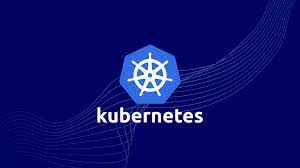Description
Introduction
OpenShift, as an enterprise Kubernetes platform, provides a powerful framework for deploying and managing containerized applications. However, understanding networking and storage within OpenShift is crucial for ensuring the scalability, reliability, and performance of your applications. This course will guide you through the essential networking and storage concepts within OpenShift, from configuring network policies and services to managing persistent storage and volumes. By the end of this course, you will have a solid foundation in OpenShift networking and storage, which will help you in optimizing and troubleshooting your OpenShift environment.
Prerequisites
-
Basic knowledge of OpenShift and Kubernetes
-
Familiarity with containerized applications and Docker
-
Understanding of cloud-native concepts and architecture
-
Basic knowledge of networking and storage fundamentals
-
Familiarity with OpenShift CLI (oc) and basic commands
Table of Contents
1. Introduction to OpenShift Networking
1.1 Overview of OpenShift Networking Architecture
1.2 The OpenShift SDN (Software Defined Networking)
1.3 Network Policies in OpenShift
1.4 Networking Models: Flannel, Calico, and OVN-Kubernetes
2. OpenShift Networking Components
2.1 OpenShift Routes and Services
2.2 ClusterIP, NodePort, and LoadBalancer Services
2.3 External and Internal Networking in OpenShift
2.4 Managing Network Traffic with OpenShift NetworkPolicies
3. Advanced Networking in OpenShift
3.1 Ingress Controllers and Load Balancing
3.2 DNS Management in OpenShift
3.3 Troubleshooting OpenShift Networking Issues
3.4 Configuring Service Mesh for Microservices Communication
4. Introduction to OpenShift Storage
4.1 OpenShift Storage Architecture Overview
4.2 Persistent Volumes (PVs) and Persistent Volume Claims (PVCs)
4.3 Storage Classes and Dynamic Provisioning
4.4 Volume Types in OpenShift (NFS, iSCSI, Ceph, GlusterFS, etc.)
5. Managing Storage in OpenShift
5.1 Configuring and Using Storage in OpenShift
5.2 Mounting and Using Persistent Volumes in Pods
5.3 Storage Access Modes: ReadWriteOnce, ReadOnlyMany, and ReadWriteMany
5.4 Using StatefulSets with Persistent Storage in OpenShift
6. Storage Options for OpenShift
6.1 Cloud-Based Storage Solutions (EBS, Azure Disks, GCP Persistent Disks)
6.2 Using Container Storage Interface (CSI) in OpenShift
6.3 Integrating with OpenShift Container Storage (OCS)
6.4 Configuring and Managing Block and File Storage
7. OpenShift Networking and Storage Security
7.1 Network Security Policies in OpenShift
7.2 Securing Storage in OpenShift
7.3 Encrypting Storage Volumes
7.4 Using OpenShift’s Integrated Security Features for Network and Storage
8. Troubleshooting Networking and Storage in OpenShift
8.1 Network Troubleshooting Tools and Techniques
8.2 Diagnosing Storage Issues in OpenShift
8.3 Common Networking and Storage Issues and Fixes
8.4 Using OpenShift Logs and Metrics for Diagnostics
9. Best Practices for OpenShift Networking and Storage
9.1 Optimizing Network Performance in OpenShift
9.2 Managing Storage for High Availability and Scalability
9.3 Backup and Recovery Strategies for OpenShift Storage
9.4 Network and Storage Configuration Management
10. Real-World Use Cases for OpenShift Networking and Storage
10.1 Multi-Cloud and Hybrid Cloud Networking in OpenShift
10.2 OpenShift Storage for Big Data and AI/ML Applications
10.3 High-Availability Architecture and Disaster Recovery
10.4 Using OpenShift Networking and Storage for Microservices
In this course, you’ve gained essential knowledge and hands-on experience with OpenShift’s networking and storage features. From understanding network policies to configuring persistent storage and managing cloud-native storage solutions, this course provides a comprehensive foundation for managing OpenShift environments. You are now well-equipped to design, deploy, and troubleshoot networking and storage configurations, ensuring high-performance and reliable OpenShift clusters. The skills learned in this course are vital for maintaining scalable and secure OpenShift deployments in a production environment.







Reviews
There are no reviews yet.